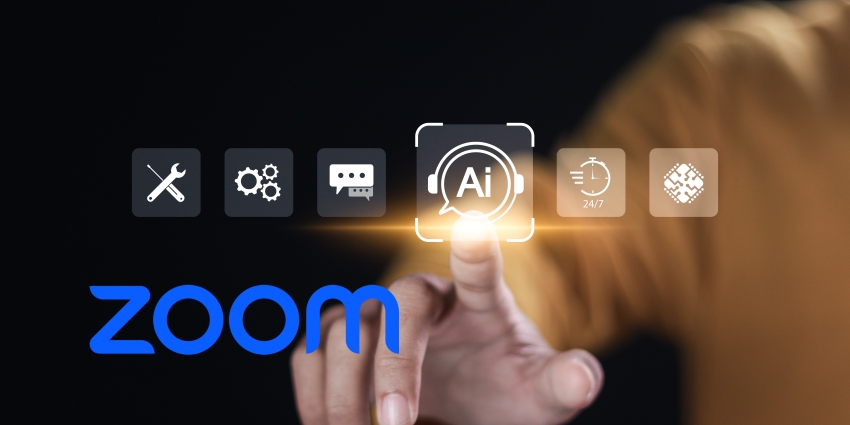Repeating the customer’s name, grouping customers into segments, tinkering with on-hold messages… that’s about as far as contact centers have historically taken personalization.
Yet, with much more data and advanced technology at their fingertips, service operations can now go much further to tailor contact center experiences to the individual.
Essentially, that’s hyper-personalization, and – although most consider it a term for marketing and sales teams – service leaders can embrace the concept to transform their contact center journeys.
To do so, they must first consider: what does a hyper-personalized contact center experience look like?
1. It’s Proactive. Better Still: Pre-Emptive
Many vendors herald conversation automation as the future of contact centers, citing its ability to give customers quick, efficient answers to their questions.
However, the old principle ultimately rings true: the best service is no service.
To achieve this, a contact center has to perpetually be in the customer’s future before they get there.
As such, they must orientate the business to support the future implications of today’s customer choices.
That’s quite the endeavor. But, with a quality management tool, a brand can start investigating the problems customers regularly face after purchasing a particular item or utilizing a specific service.
Next, they may consider how to remove those issues altogether. When that’s not possible, consider: What are the signs that they may face that problem before contacting the company?
An excellent example of how brands do this is via remote asset monitoring technologies. These track the performance of digital devices and, when there’s an issue, they inform the contact center via APIs that leverage Internet of Things (IoT) connectivity.
After receiving that signal, the contact center can initiate a workflow to either solve the problem on the customer’s behalf or inform the customer— on their preferred channel — and give them the tools to solve it autonomously.
Ultimately, this strategy requires data integrity and appreciation of customer lifetime value. However, it’s an approach that hyper-personalizes the customer journey, removing unnecessary touchpoints.
2. It’s AI Agent Led
It’s not possible to pre-empt all customer problems. But, thanks to intent tracking, contact centers can plan for most and – at least – partially automate them.
That process starts with an AI Agent greeting customers across channels and gauging their contact reasons.
With this information, the AI Agent can either try to autonomously resolve the query – using internal knowledge sources – or pass the customer through to a rule-based self-service experience.
The self-service experience doesn’t have to be on the same channel the customer contacted. Instead, an omnichannel contact center should be able to redirect the customer to the channel that offers the best experience, per the intent.
Alternatively, suppose the query is impossible to fully automate. In that case, the AI Agent can gather pertinent information in the contact queue and feed that through to a live agent so they can personalize the experience from the beginning of the interaction.
Finally, as that AI Agent hands over to a live agent, it can utilize a predictive engine to interpret the best possible agent to resolve the customer’s query, sieving through various customer data points.
Another routing technique gaining traction is to spot – via a WEM solution – which agents handle particular queries best and set the algorithm so they get more of those contacts. The result: better customer, employee, and business outcomes.
3. It’s Orchestrated
Consider those contacts that are too tricky or offer too much value to automate. What does the resolution process typically look like?
AI can help here, scanning customer conversation transcripts, finding the best path to follow, and sharing that knowledge via agent assist solutions.
From there, these solutions will lead the agent down the right path, sharing data from internal solutions in real time to help live agents hyper-personalize and accelerate the experience.
Contact centers can also engage in process mining to spot processes within that flow and automate them.
For instance, maybe live agents need to fill in a form. AI can help auto-fill much of that by scanning internal systems to streamline and – again – hyper-personalize the customer’s journey.
4. It’s Thoughtful
As live agents engage with customers, there are various techniques they can use to personalize the experience.
For example, if the customer seems pushed for time, agents should create a sense of urgency. Alternatively, if the customer is angry, they should offer acknowledgment, empathy, and reassurance.
These lessons are old. However, during a busy day in the contact center, it’s easy to let them slip.
That’s where agent-assist tools come in, offering real-time coaching to spotlight real-time opportunities for agents to leverage these soft skills, be more personable, and create connections.
Such tools can offer this guidance by tracking live customer sentiment. Over time, they’ll become smarter, pinpointing exact moods and how agents evoke them.
With this insight, contact centers can discover best practices to coach across the agent population and reinforce via the agent assist application.
5. It’s Cradle-to-Grave
From the AI Agent that greets the customer to the post-contact follow-up, many contact centers now have the tools to hyper-personalize service experiences from start to finish.
That post-contact follow-up may include an AI-generated summary of the resolution for agents to review and send via a one-click flow. Customers then have something tangible to refer back to.
Contact centers may also consider: for this intent, what often drives repeat contacts? Then, in the post-contact follow-up, embed snippets of helpful information to pre-empt the follow-up.
Just be careful here, as too much information may create a new burst of contact. However, with appropriate testing, this is a tangible way to not just hyper-personalize contact center experiences but also improve first contact resolution (FCR).
Reimagine Your Contact Center with Zoom
Not all contact center platforms enable such hyper-personalization. Some first-generation cloud providers have fallen behind the AI innovation curve, as they’re not cloud-native and instead rely on point solutions to augment their platforms.
Instead, service leaders should move forward with a provider that can seamlessly embed AI across its solution. The tell-tale sign here is in the vendor’s release cadence. If it’s not releasing numerous updates and enhancements each month, that presents a significant concern.
Zoom is one vendor that has developed a frenetic flywheel of CCaaS innovation, offering an AI-first platform that layers over the contact center’s chosen CRM solution.
That platform also includes its popular UCaaS solution, enabling contact centers to spread these hyper-personalization solutions to every employee engaging with customers.
Already, the vendor has helped more than 1,250 organizations transform their contact center experiences. To find out more, visit zoom.com







